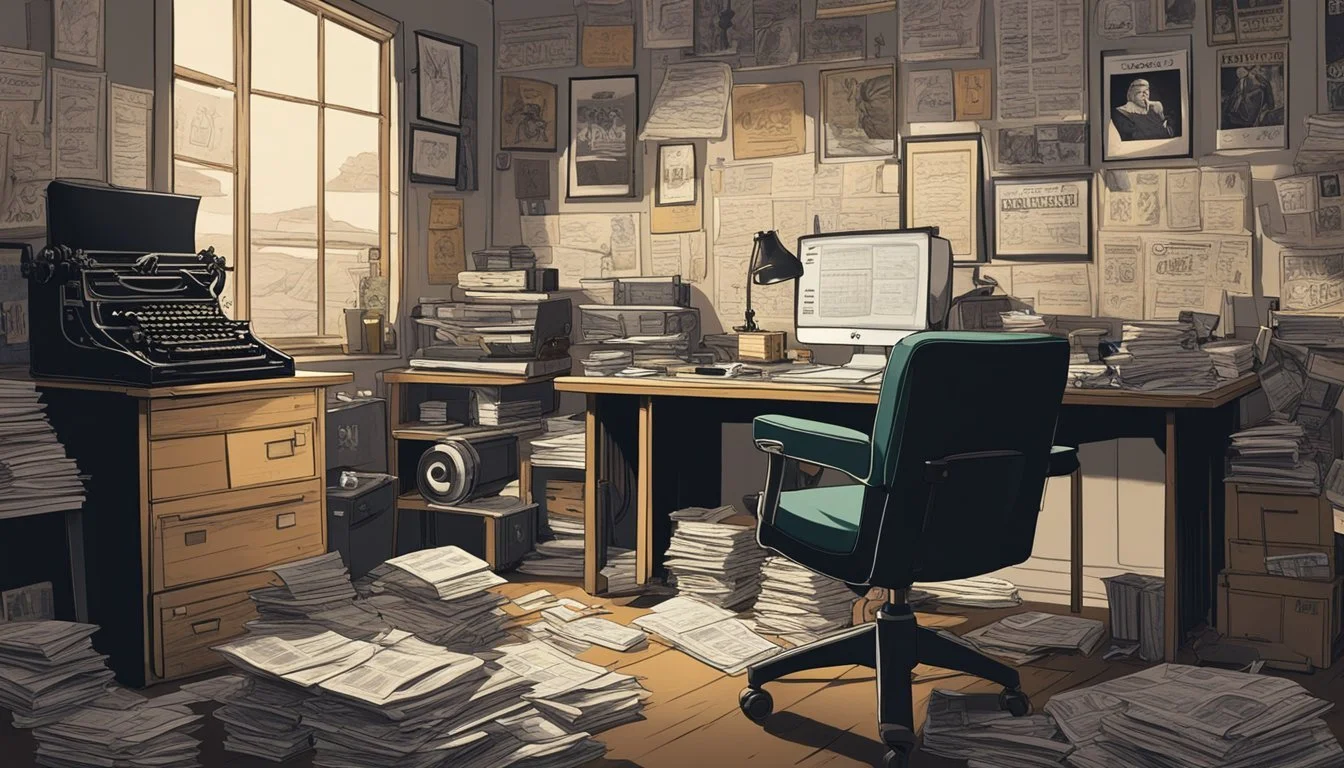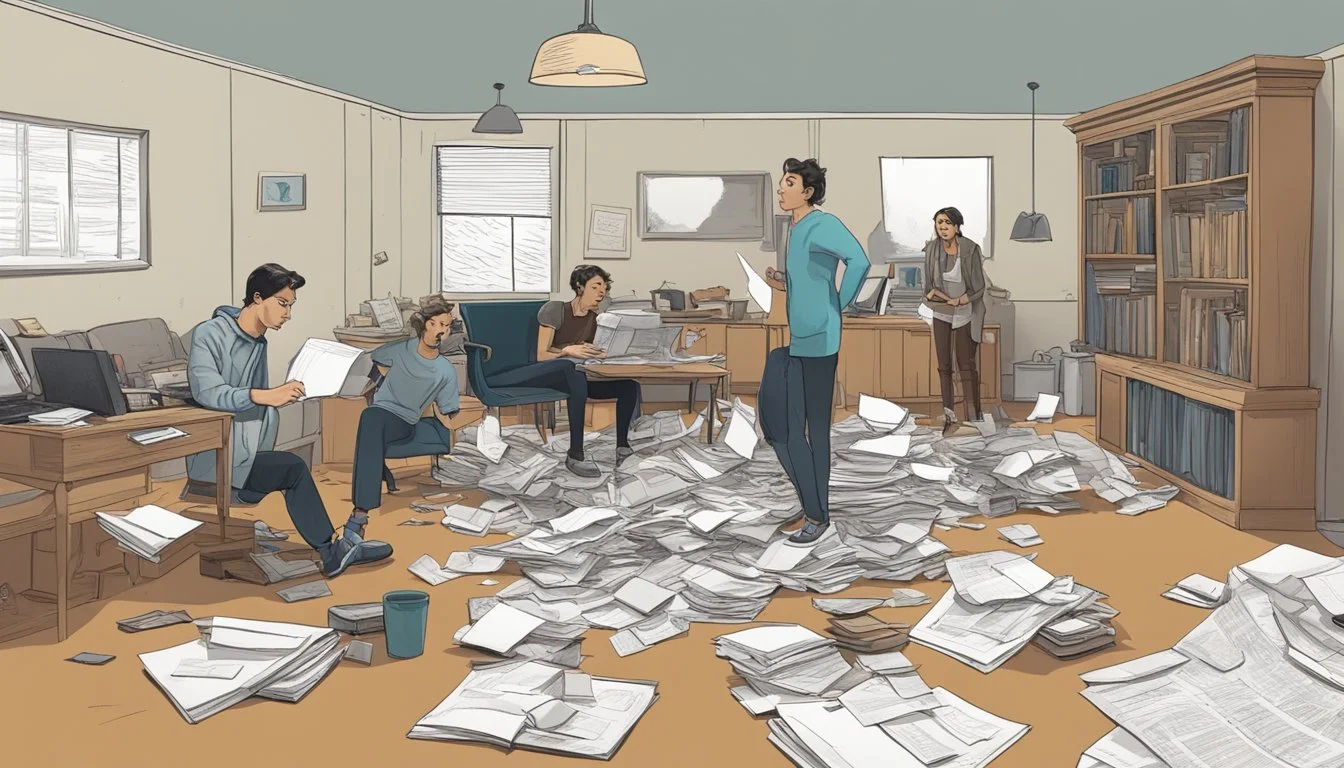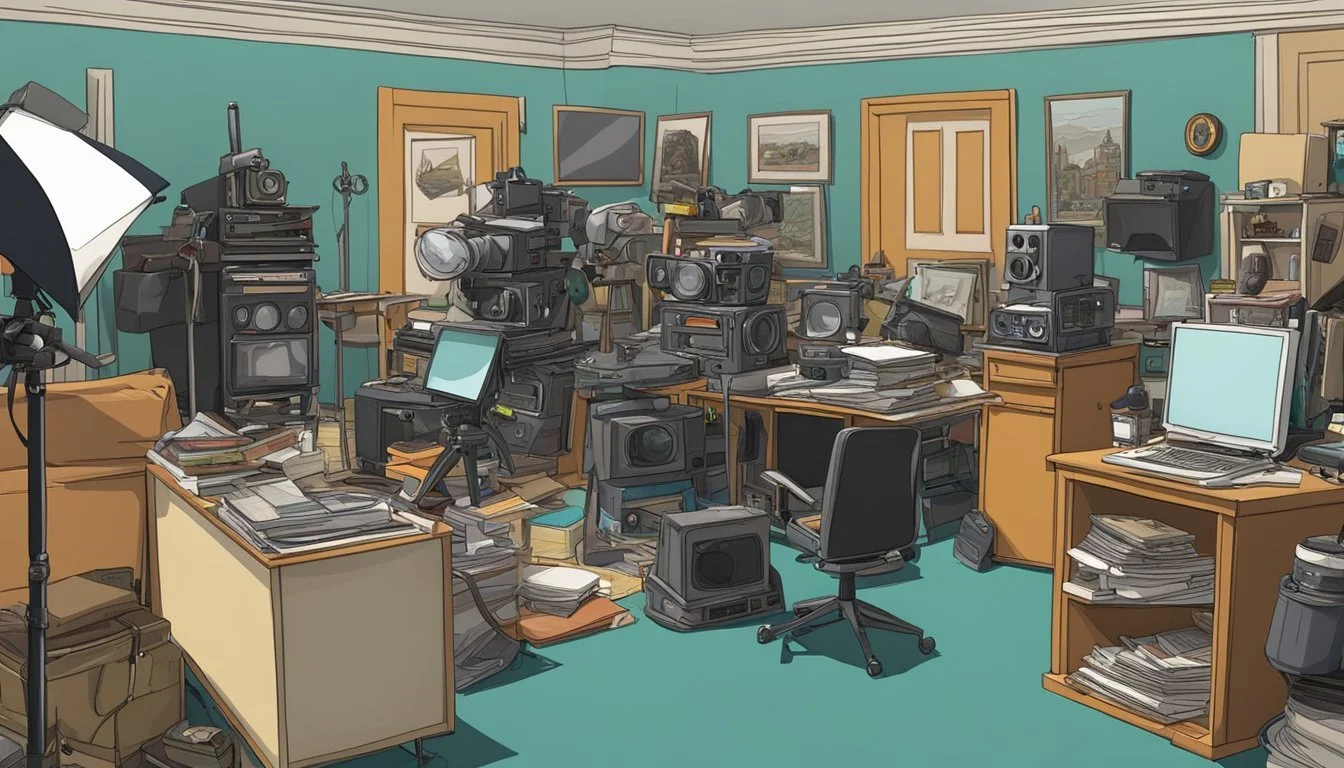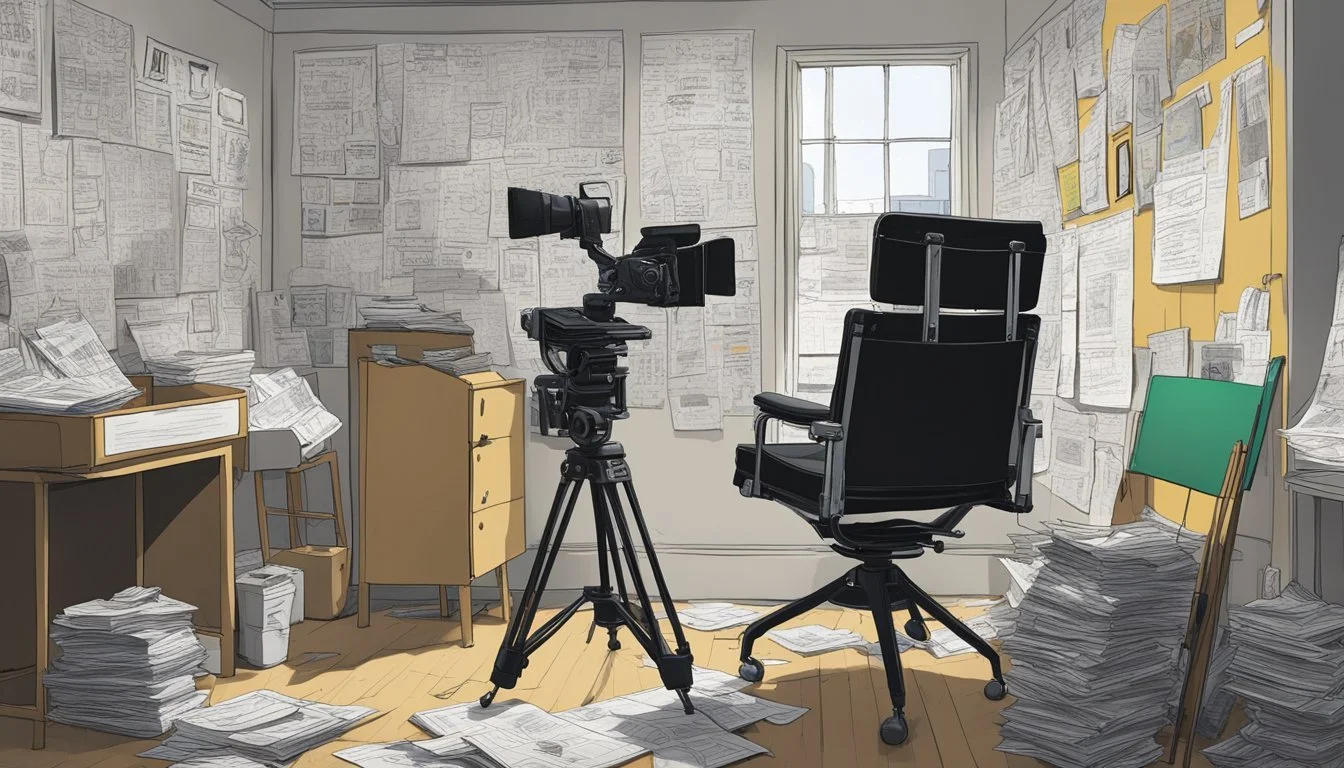Making 'The Room': The True Story Behind 'The Disaster Artist'
Unveiling Hollywood's Cult Phenomenon
"The Room" is widely regarded as one of the worst films ever made, yet it has achieved cult status since its 2003 release. The bizarre story behind its creation is almost as fascinating as the movie itself. Tommy Wiseau, the enigmatic writer, director, and star of "The Room," became an unlikely Hollywood legend through his passionate but misguided filmmaking efforts.
James Franco's "The Disaster Artist" brings to life the chaotic production of "The Room" and the eccentric personality of Tommy Wiseau. Based on the book by Greg Sestero, Wiseau's co-star and friend, the film offers a glimpse into the making of this infamous "masterpiece." From Wiseau's mysterious background to his unorthodox methods on set, "The Disaster Artist" paints a portrait of an ambitious outsider determined to make his mark on the film industry.
The true story behind "The Disaster Artist" is filled with surreal moments that blur the line between fact and fiction. Wiseau's insistence that his accent originated in New Orleans, his decision to purchase expensive filming equipment rather than rent, and his unrelenting belief in his own talent all contributed to the unique circumstances surrounding "The Room." These elements combine to create a compelling narrative about the pursuit of dreams and the unpredictable nature of cult fame.
Origins and Inspiration
The Disaster Artist draws from Greg Sestero's memoir and the enigmatic figure of Tommy Wiseau. It explores the unlikely friendship that led to the creation of The Room, a film widely regarded as one of the worst ever made.
Adapting the Memoir
James Franco based The Disaster Artist on Greg Sestero and Tom Bissell's book of the same name. The memoir recounts Sestero's experiences working on The Room and his friendship with Tommy Wiseau. Franco's adaptation aims to capture the bizarre behind-the-scenes story of the cult classic's production.
The film stays largely faithful to Sestero's account, portraying key events and characters from the book. It focuses on the dynamic between Sestero and Wiseau, exploring their journey from aspiring actors to creators of an unintentional Hollywood phenomenon.
The Enigma of Tommy Wiseau
Tommy Wiseau remains a mysterious figure at the heart of The Disaster Artist. The film portrays his eccentric personality, unusual accent, and enigmatic background. Wiseau claims to be from New Orleans, but his accent suggests Eastern European origins.
James Franco's portrayal emphasizes Wiseau's unconventional approach to filmmaking and his determination to succeed in Hollywood. The Disaster Artist explores Wiseau's motivations and quirks, offering insight into the man behind The Room's infamy.
The film delves into Wiseau's inexplicable wealth and his decision to self-finance The Room. It highlights his unorthodox acting and directing methods, which contributed to the film's notoriety as a "so bad it's good" cult classic.
Production of 'The Room'
Tommy Wiseau's enigmatic film 'The Room' had a tumultuous production process marked by unconventional methods and a chaotic set atmosphere. The making of this cult classic involved a mix of inexperienced actors, unusual directing choices, and behind-the-scenes drama.
Behind the Scenes
Wiseau insisted on shooting 'The Room' simultaneously in 35mm film and HD digital, an unusual and costly decision. He frequently forgot lines and required numerous takes. The production lasted much longer than typical low-budget films, stretching over six months.
Wiseau's directing style baffled the crew. He often made perplexing choices, like insisting on elaborate green screen setups for simple rooftop scenes that could have been shot on location. His script contained nonsensical dialogue and plot holes, which he refused to address.
Sandy Schklair, hired as script supervisor, reportedly took on unofficial directing duties to keep the production moving. He worked to maintain some semblance of continuity and coherence in the face of Wiseau's erratic leadership.
Casting and Crew
Wiseau cast himself as the lead character Johnny, despite his limited acting experience. He recruited other actors through unconventional means, including classified ads. The main cast included Juliette Danielle as Lisa, Philip Haldiman as Denny, and Greg Sestero as Mark.
Many crew members left the production due to frustration with Wiseau's methods. Those who stayed faced long hours and confusing instructions. Wiseau's secrecy about his background and the source of the film's $6 million budget added to the on-set tension.
The cast struggled with the script's poor quality and Wiseau's directing. Actors often received contradictory guidance or had to improvise to make scenes work. Despite these challenges, some crew members found the experience oddly fascinating, contributing to the film's eventual cult status.
Cultural Impact
"The Room" achieved notoriety far beyond its initial release, becoming a cultural phenomenon. Its unconventional storytelling and unintentional humor captivated audiences worldwide.
The Cult Following
"The Room" developed a devoted cult following reminiscent of "The Rocky Horror Picture Show." Fans attended midnight screenings, often dressed as characters and armed with plastic spoons to throw at the screen. These interactive viewings became social events, with audiences reciting lines and cheering at infamous moments.
The film's popularity spread through word-of-mouth and online forums. Fans reveled in dissecting its peculiar dialogue, plot inconsistencies, and bizarre acting choices. This enthusiasm led to the creation of fan art, memes, and even "The Room" themed parties.
Critical Reception and Legacy
Initially panned by critics, "The Room" was dubbed "the Citizen Kane of bad movies." The Los Angeles Times called it "a movie so bad, it's good." This backhanded praise fueled its reputation.
Over time, the film's legacy grew. It inspired academic discussions on the nature of art and authorship. Filmmakers and actors, including established Hollywood names, expressed admiration for its unique vision.
"The Room" influenced popular culture, referenced in TV shows and inspiring parodies. Its journey from obscurity to cult classic status culminated in "The Disaster Artist," a critically acclaimed film about its making.
Adaptation into 'The Disaster Artist'
James Franco's film "The Disaster Artist" brought Tommy Wiseau's story to a wider audience. The adaptation faced unique challenges in portraying the making of "The Room" and capturing its eccentric creator.
Casting the Adaptation
James Franco took on the role of Tommy Wiseau, immersing himself in the character's mannerisms and accent. Dave Franco played Greg Sestero, Wiseau's friend and co-star. Seth Rogen joined the cast as script supervisor Sandy Schklair. Ari Graynor portrayed Juliette Danielle, the actress who played Lisa in "The Room."
The casting choices aimed to balance authenticity with star power. James Franco's transformation into Wiseau was particularly praised for its accuracy and commitment.
Directing and Production Challenges
James Franco directed "The Disaster Artist" while also starring as Wiseau, a complex undertaking. The production team faced the task of recreating scenes from "The Room" with meticulous detail. They had to strike a balance between honoring the source material and crafting an engaging narrative for audiences unfamiliar with the cult film.
Franco's directing approach involved extensive research and consultation with Wiseau and Sestero. The film incorporated behind-the-scenes anecdotes from Sestero's book, offering insights into the chaotic production of "The Room."
The Release and Response
"The Disaster Artist" premiered to critical acclaim and awards recognition. The film's release strategy and reception differed greatly from the original "The Room" it depicted.
Box Office and Reviews
"The Disaster Artist" opened in limited release on December 1, 2017, before expanding nationwide on December 8. The film grossed $21 million domestically and $29 million worldwide against a $10 million budget.
Critics praised James Franco's portrayal of Tommy Wiseau. The movie earned a 91% approval rating on Rotten Tomatoes. Many reviewers highlighted the film's humor and heart in depicting the making of "The Room."
Seth Rogen and Alison Brie received positive notices for their supporting roles. The film's premiere at South by Southwest garnered a standing ovation.
Award Season
James Franco won a Golden Globe for Best Actor in a Musical or Comedy. The film also earned a nomination for Best Motion Picture - Musical or Comedy.
Franco's performance scored nominations from the Screen Actors Guild and Critics' Choice Awards. The screenplay by Scott Neustadter and Michael H. Weber received recognition from the Writers Guild.
"The Disaster Artist" earned an Oscar nomination for Best Adapted Screenplay. Though it lost to "Call Me by Your Name," the nomination cemented the film's legitimacy in Hollywood circles.
Influence on Media and Arts
"The Room" and its making-of story depicted in "The Disaster Artist" have left an indelible mark on popular culture. The film's unintentional comedy and Tommy Wiseau's enigmatic persona have inspired countless artists and filmmakers.
Influence on Acting and Filmmaking
"The Room" has become a case study in filmmaking, often used as an example of what not to do. Acting classes and film schools analyze its peculiar dialogue delivery and unconventional storytelling techniques. Comedians frequently reference the movie in their routines, mimicking Wiseau's distinctive accent and mannerisms.
Many filmmakers cite "The Room" as inspiration for their own work, embracing its "so bad it's good" qualities. The film's cult status has led to a surge in intentionally campy productions, with creators aiming to capture the same accidental magic that made "The Room" famous.
Retrospectives and Documentaries
Numerous documentaries and retrospectives have explored the phenomenon of "The Room" and its creator. These productions often draw parallels between Wiseau and other infamous filmmakers like Ed Wood, examining the thin line between disaster and artistry in cinema.
Film festivals regularly host screenings of "The Room" accompanied by panel discussions and Q&A sessions. These events attract film buffs, critics, and casual viewers alike, all eager to dissect the movie's peculiarities and lasting impact on pop culture.
The story has also inspired books, podcasts, and academic papers, cementing its place in media studies curricula worldwide.
Conclusion
"The Room" stands as a unique cultural phenomenon, defying conventional filmmaking norms. Tommy Wiseau's passionate yet perplexing vision resulted in an unintentionally hilarious cult classic.
"The Disaster Artist" sheds light on the bizarre production process and the friendship between Wiseau and Greg Sestero. Their unlikely bond formed the emotional core of both "The Room" and its dramatized retelling.
Wiseau's unwavering commitment to his art, despite numerous obstacles, exemplifies a certain type of creative spirit. His journey from obscurity to infamy highlights the unpredictable nature of fame in Hollywood.
The enduring fascination with "The Room" speaks to audiences' appreciation for authenticity, even when it manifests in unconventional ways. Wiseau's enigmatic persona continues to intrigue fans and critics alike.
Ultimately, the story behind "The Room" reminds us that passion, persistence, and friendship can lead to unexpected outcomes in the entertainment industry. It stands as a testament to the power of following one's dreams, regardless of the results.






